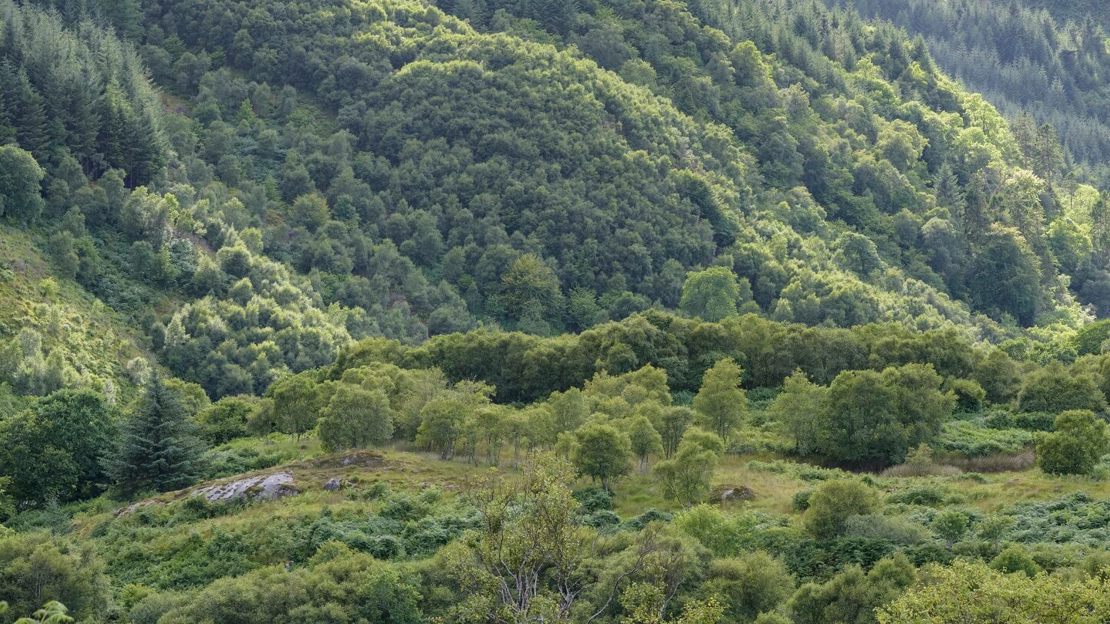Scotland's nature needs help to recover and thrive
We need a robust delivery strategy for biodiversity in Scotland.

The vision outlined in the Scottish Government’s Biodiversity Strategy was positive. Thank you for joining us in calling for the delivery plan to include stronger actions that will help restore native woods and reverse nature’s decline.
1 in 9
species in Scotland
is at risk from extinction
We need a strong strategy for nature recovery
During the consultation on the draft Scottish Biodiversity Strategy in spring 2023, you joined us in urging Scottish Government to include ambitions to protect, restore and expand native woodland habitats. In autumn 2023, it launched a consultation on a Scottish Biodiversity Strategy 5-year delivery plan to gather your feedback on the key actions and targets it sets out.
Woodland Trust Scotland called for the delivery plan to set out clear actions that would reduce deer densities, expand native woodland, improve woodland condition, remove Rhododendron ponticum from Scotland’s rainforest, and help timber forests become more nature friendly and resilient.
The Scottish Biodiversity Strategy delivery plan was published in November 2024. While it sets out some promising actions, there is still much work to be done if Scotland is to halt biodiversity loss by 2030.
How does the plan hold up against our recommendations?
We responded to the consultation with five recommendations for the Scottish Government to tackle the nature emergency with trees.
1. Reduce deer densities
The consultation document included an ambition to reduce deer densities to two deer per square kilometre in ’priority woodland’ to allow trees to naturally regenerate.
We recommended that this ambition should extend to broadening the ‘priority woodland’ group to include all ancient woodland, native pinewoods and core areas of Scotland’s rainforest. We felt it should be more ambitious on reducing deer numbers beyond priority woodland, and commit to low deer densities in the six proposed landscape restoration projects, with incentives and sanctions to turn ambition into action.
The delivery plan aims for a minimum increase of 25-30% on current cull levels by 2030, and we are encouraged that some further legislation and initiatives are on the way. For example, we expect deer management to be a major focus of the Natural Environment Bill, and have welcomed the introduction of Deer Management Incentive Scheme pilots. These should be rolled out to Scotland’s rainforest and other priority areas.
2. Expand native woodlands
Expanding native woodland in varied habitats is crucial to biodiversity. We recommended that the plan should develop support mechanisms to create woods alongside rivers on 30% of eligible areas by 2045, support local authorities to increase canopy cover, support the integration of trees and woods into farming systems, replace 50% of lost hedgerows by 2045, prioritise native woodland creation in areas that buffer, extend and connect areas of existing ancient woodland, and develop a new grant scheme to help restore the natural mountain tree line to our uplands.
The delivery plan falls short of these recommendations, with no explicit commitment to mountain woodlands or hedgerows. However, with the development of the post-CAP agricultural support scheme underway, Woodland Trust Scotland is working hard to advocate for more targeted financial support for crofters and farmers to integrate trees and hedgerows into their businesses and landscapes. We will also continue to work with policymakers and government agencies to highlight the importance of expanding and connecting existing ancient woodland, which is also missing from the delivery plan.
3. Improve woodland condition
Our native woodland is threatened by deer numbers and non-native trees and will be lost without urgent action. We recommended that the delivery plan committed to significantly reduce deer numbers, restore 50% of Plantation on Ancient Woodland Sites (PAWS) on private land and 80% on public land, and create a robust metric for assessing native woodland creation.
Encouragingly, the Scottish Government has committed to delivering an updated National Register of Ancient Woodlands in partnership with Woodland Trust Scotland, which should be informed by a metric for assessing woodland condition. However, there lacks a strategy to further the restoration of ancient woodland under plantations – an important process in ensuring our remnants of ancient woodlands are not lost forever.
4. Remove Rhododendron ponticum from Scotland’s rainforest
We welcome the commitment to remove invasive non-native species at scale, but we need a coherent plan to remove it from core areas of Scotland’s rainforest where it is an existential threat. While the plan didn't commit to our calls for a dedicated Rainforest Restoration Fund, more money has been allocated to our rainforests in the latest budget. How this will be spent remains to be seen.
5. Help timber forests restore nature
We need more nature-friendly timber forests in Scotland and welcome the ambition to secure greater biodiversity value from them. The plan aims to embed nature-positive forestry, committing to update woodland management guidance to improve biodiversity. We hope to work with Scottish Forestry to:
- emphasise the significant ecological benefits of a natural mountain woodland tree line on timber plantations where appropriate
- offer more comprehensive grants which could support the restructuring of timber plantations to benefit nature.
Thank you for responding to the consultation
The consultation closed in December 2023. Although our recommendations were not included in full, your voices helped shape a Scottish Biodiversity Strategy that has many positives - thank you. The delivery plan remains key to addressing declining nature loss in Scotland by 2030 and we'll continue to advocate for the protection, restoration and creation of Scotland’s native woodlands.

